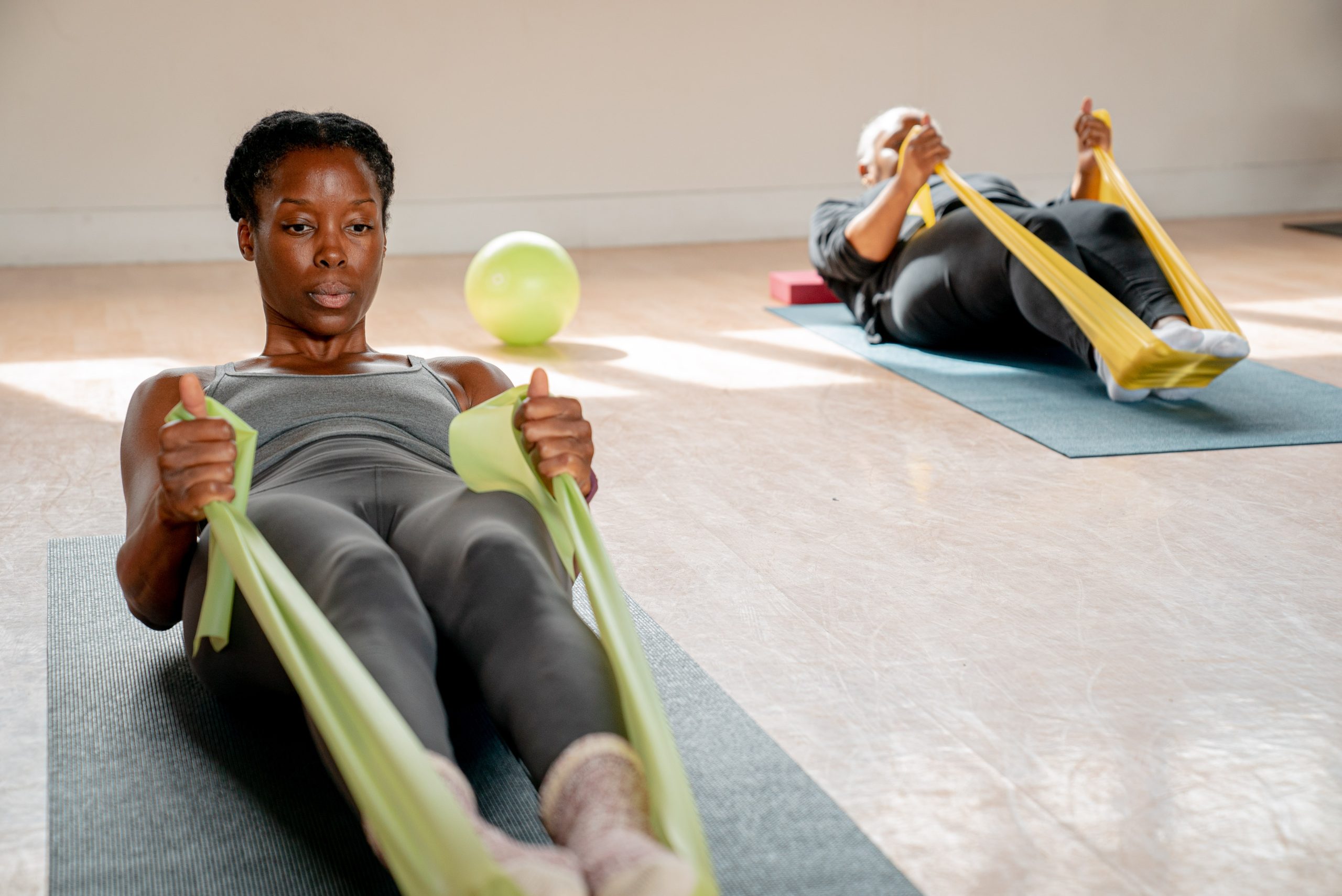Nutrition and Fitness While Fasting: How to Stay Healthy and Energised
|
There are many reasons you may choose to fast – religious traditions like Ramadan or Lent, intermittent fasting as a weight-management technique, or fasting as a way to practice discipline and gratitude. Whatever your reason, it’s important to stay mindful of nutrition and fitness while fasting, especially if it’s for a prolonged period of time. When it’s done right, fasting can support your goals and help you enjoy the benefits without reversing your fitness progress – it just takes a bit of extra planning!
Understanding your body’s specific needs while fasting
Extended periods of fasting, particularly if you are refraining from liquids as well, can impact your hydration and energy levels, making it harder to stay hydrated and energetic. Dehydration can lead to dizziness, headaches, and fatigue – all symptoms that can drastically impact on your day overall, not just your fitness journey.
Making sure you replenish your body with water and nutrition during your non-fasting hours is essential to help you sustain your energy and still feel good by the time you break your fast. The key is to avoid foods and drinks that lead to dehydration or that may cause an energy crash and instead picking options that will keep you sufficiently hydrated and that slowly release energy.
Below are some of our top exercise and nutrition fasting tips to help you keep on track with your goals while fasting.
Fuel up before beginning your fast
The final meal before beginning your fast is vital to help you fuel your body with nutrients and foods that will keep your energy levels up during your fasting hours. Include a balance of complex carbs, protein, and healthy fats that will energise you and keep you feeling full longer. Some of the best foods for fasting are whole grains, oats, fruits and vegetables, eggs, yogurt, nuts, and seeds. And don’t forget to drink plenty of fluids – water, 100% juice, and herbal teas are the best options!
Here are a few examples of meals to help power you through your fast:
Omelette or scrambled eggs with vegetables – spinach, mushrooms, peppers, and tomato are excellent. Side of whole grain seeded toast with unsalted butter.
Glass of 100% orange juice and glass of water.
Greek yogurt topped with a variety of nutritious and high-protein toppings like granola, banana, assorted berries, almond butter, and a handful of nuts.
Fruit smoothie and a large glass of water.
Oatmeal loaded up with nuts, seeds, and fruit like strawberries or apples. Add a dollop of Greek yogurt for added protein and honey as a natural sweetener.
Herbal tea and a large glass of water.
Breaking your fast
Once you’ve reached the end of your fast, ease your body back into food gently with something light like fruit. This will provide some natural sugar for quick energy and rehydrate your body while being gentle on the stomach.
When it comes time for your larger post-fast meal, it may be tempting to eat anything and everything, but that won’t do your body any favours – it’s still important to stick to a healthy balance of protein, carbs, and healthy fats to help your body replenish.
Proteins like fish, lean meat, legumes, and eggs help with muscle recovery. High fibre complex carbs like brown rice, whole grain bread, and quinoa give you a boost of energy. And healthy fats like olive oil, nuts, seeds, and avocado help your body with nutrient absorption and cell functioning.
Here are a few examples of meals that will support your fitness and nutrition goals following a fast:
Tomato soup, broth with shredded chicken, or miso broth with chunks of tofu.
Fish with quinoa or brown rice and a heap of vegetables – salmon and cod are great options.
Bowl of low-sugar sorbet with berries.
Salad with your choice of greens, tomato, cucumber, avocado, nuts, and a drizzle of olive oil.
Hearty beef, lamb, or lentil stew with vegetables like sweet potatoes, carrots, and courgettes.
Fresh berries with Greek yogurt and a drizzle of honey.
Carrots, cucumber, and pitta bread with high-protein dips like hummus, labneh, and baba ghanoush.
Roasted chicken with rice pilaf and vegetables like courgettes, aubergine, broccoli, and cauliflower.
Rice pudding with berries, pistachios, and a drizzle of honey.
Everyone has different needs when it comes to nutrition. If your body feels like it needs a bit more food to get your energy levels back up after a period of fasting, some great additions to your meal may include whole grain bread or pitta with hummus, hard-boiled eggs, cottage cheese, or whole-grain crackers topped with a low-sodium cheese or tuna. Listen to your body and adjust your meals accordingly based on what will make you feel your best!

Exercise while fasting
It’s perfectly safe to exercise while fasting – you just need to take a bit of extra care to make sure you’re staying hydrated and well-fuelled during non-fasting times. You may also need to make some adjustments to your usual workout schedule to support your body during your fast. This may mean creating a fasting workout plan that involves working out at a different time than you’re used to or trying out a different type of exercise. Also keep in mind that while you’re likely to perspire a bit while you work out, it’s best to avoid exercises that make you overly sweaty as this will dehydrate you faster.
Best times to work out:
If your fast includes the restriction of liquids, such as during Ramadan, the best time to move your body is during your non-fasting hours so you’re able to rehydrate while you exercise. If you’re able to drink water during your fast, you may choose to work out at any time of day, depending on the type of exercise you’re looking to do.
Strength-training is best to do while you have a bit of food in your system – otherwise, your body may start breaking down muscle for fuel. Low-intensity workouts like yoga and Pilates are excellent options during a fasting period, and if weight-loss is your primary goal, you may benefit from doing a cardio session just before breaking your fast. There are several benefits to fasted cardio, such as reducing heartburn and positively impacting insulin sensitivity. Cardio can quickly deplete your energy levels, so refuel with a meal soon after your workout session.
Best types of exercise:
Prolonged periods of fasting can lead to muscle loss if not done right, so it’s good to prioritise strength-training exercises. Low-impact weightlifting or bodyweight sessions will help you sustain your muscle mass – just be sure you’re fuelling your body with plenty of protein and complex carbs during your non-fasting hours. Support your strength-training with low-intensity forms of cardio like walking, light cycling, and swimming and a mix of yoga, Pilates, and stretches to aid your recovery.
If you are refraining from liquids during your fast hours, try to avoid super sweaty HIIT and high-intensity cardio sessions as they can easily lead to dehydration and a decrease in muscle mass. Otherwise, you may choose to include these types of workouts as long as you replenish your body with plenty of water or electrolyte drinks during your session!
Make sure to listen to your body while working out during a fast. If you feel lightheaded, dehydrated, or ill, stop your workout and swap to something gentle like stretching or recovery yoga instead. Your health is the most important thing – if working out doesn’t feel good while you’re fasting, change things up to make sure you’re getting in most of your day’s activity during non-fasting hours.
Staying hydrated while fasting
This is especially important if you are fasting from both food and liquids. But even if you can drink water during your fast, it’s important to keep your body properly hydrated. And this doesn’t just mean drinking plenty of liquids – there are other things to consider as well. For example, it’s best to avoid salty and sugary foods, and you may want to cut back on spicy meals as they can cause your body to lose fluids. If you like your food hot, make sure to balance it out with plenty of hydrating foods.
Enjoy lots of these:
- Fruits and vegetables, such as watermelon, strawberries, oranges, apples, tomatoes, cucumbers, lettuce, spinach, bell peppers, and cauliflower
- Soup and broth
- Yogurt, especially Greek yogurt
- Coconut water
- Herbal teas
- Natural fruit juices
- Sugar-free sports drinks with electrolytes
Limit these:
- Salty snacks like crisps and chips
- Ultra-processed, deep fried, and fast foods
- Cured and processed meats
- Cakes and puddings that are high in artificial sweeteners
- Coffee and other highly caffeinated drinks
- Drinks with artificial sugar like soda, sugary energy drinks, and hot chocolate
- Alcohol
Of course, nutrition is all about balance. Don’t feel like you need to cut these foods and drinks out completely if you’re fasting – just try to limit them. For example, if you like eating crisps or biscuits after dinner every night, try to cut down to just a couple times a week and enjoy more fasting-friendly snacks on the other days!
By keeping these tips in mind, you’ll be able to keep up with your fitness and nutrition goals and continue to feel great while you fast. If you are fascinated by the connection between nutrition and fitness, you may be interested in our new Advanced Nutrition course. By getting qualified, you may even be able to help others with their goals during their fasted periods! Click here to learn more about the course and get in touch with one of our advisors.





